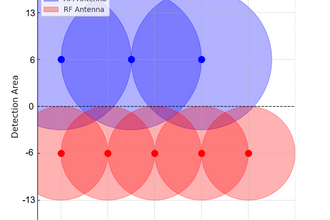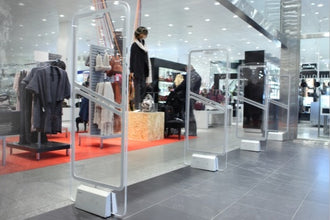
Hi there! Welcome to Bullseye Protection. We specialize in retail inventory loss prevention. In our experience, boutiques that incorporate systems to control inventory have a much greater success at preventing inventory shrinkage.
We come into play when you decide to invest in anti-theft EAS systems: antennas and clothing sensors, which can work in unison with a retail management system, so as you being part of our family, we also want to provide you with recommendations in the general management of your store, and their relation to anti shoplifting.
If your boutique is thriving, and you might be grappling with the question of how to improve your retail operation. Incorporating the use of a barcode scanner is one of the foundational elements of proper expansion as it can be a strategic tool that ensures your operations stay smooth and under control. As you take on more stock and new employees, shrinkage risks increase, and errors will creep in if you don’t pre-empt these types of crises.
Investing at the proper time in these tools ensures that your growth continues effortlessly and your business stays prepared for the future. You’ve already built something incredible—this next step will help you make your next decision with confidence.
Below we tell you about 6 important arguments to invest in a retail management system with great scanner functionality and take your boutique operations to the next level.
Enjoy!
1. Improved Accuracy, Speed, and Ease of Inventory Management
Keeping track of stock across one or two locations can feel overwhelming without the right tools. Scanners simplify this process by updating your inventory in real-time as items move through your store—from receiving to the sales floor. This makes your inventory more accurate and ensures you know exactly what stock is available. Additionally, scanners speed up routine tasks, such as physical counts or spot checks, without burdening you or your team. Managing high-theft items, premium apparel, or fast-moving products becomes easier and less prone to errors.
Example: During a quick inventory check of your premium apparel section, a scan of your handbags reveals a missing item, alerting you to potential shrinkage before it’s too late.
2. Keeping Employees Accountable at the Point of Sale
Smaller stores can be vulnerable to sweethearting, where employees give unauthorized discounts or free items to friends. Scanners integrated with your checkout system require every product to be scanned, making it harder for dishonest transactions to slip through. You can also use scanners to track which employees handle certain sales, adding an extra layer of accountability.
Example: A team member is caught discounting items without authorization—something your scanner-based POS system flagged in real-time.

3. Preventing Theft with RF or AM Tag Integration
If your shop is located in a busy area, theft is always a concern. Adding RF or AM tags to your apparel gives you an edge by ensuring that items can't leave your store unnoticed. Paired with scanners, these tags provide a double layer of protection: you’ll know what stock you have at all times, and any unscanned item leaving the store triggers an alert.
Example: A customer attempts to walk out with a jacket without paying, setting off the alarm connected to the RF scanner and alerting your staff.
4. Streamlining Returns and Exchanges
Returns can be a major source of shrinkage if not properly managed. A scanner ensures that every return is correctly logged and the item is restocked in your system. This makes it harder for fraudsters to return used or counterfeit garments.
Example: A customer returns a sweater, which is scanned at the counter to confirm it matches the original purchase, preventing any potential fraud.
5. Using Data to Stay Ahead of Shrinkage
Even small retail stores can benefit from tracking inventory patterns to spot issues early. Scanners allow you to monitor which items are prone to shrinkage and when stock discrepancies occur. With this information, you can adjust security measures or pay extra attention to high-risk apparel during peak times.
Example: After reviewing your sales data, you notice scarves often go missing during seasonal sales. You decide to place them closer to the checkout counter, reducing future losses.
6. Faster Service for Your Customers
Scanners aren’t just about loss prevention—they also make it easier to serve your customers. Instead of searching through stock manually, you can scan items to quickly check availability. This speeds up service, reduces frustration, and ensures your top garments are always on hand when needed.
Example: A customer asks for a specific blouse, and your employee uses the scanner to confirm it’s available, impressing the shopper with the quick response.

Standalone Retail Scanners vs. Retail Management Software
To conclude we would like to convey that if your boutique store is growing the use of barcode scanners is really inevitable, if you decided to purchase them, then the next decision you have to make is if you will go with a standalone scanner or you will go with a more robust retail management software system.





